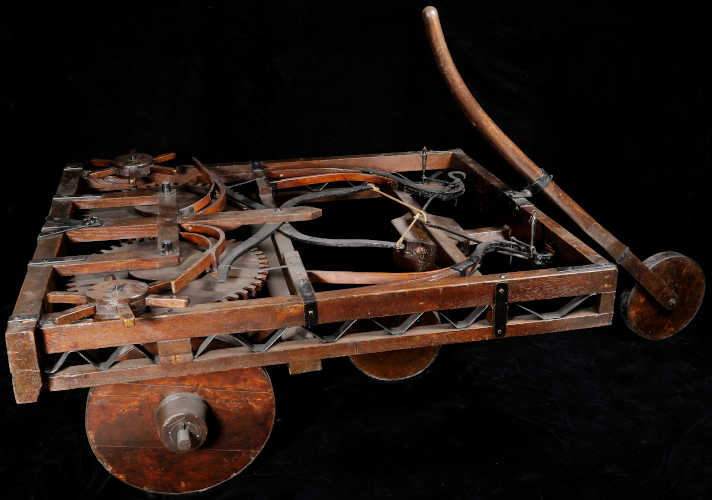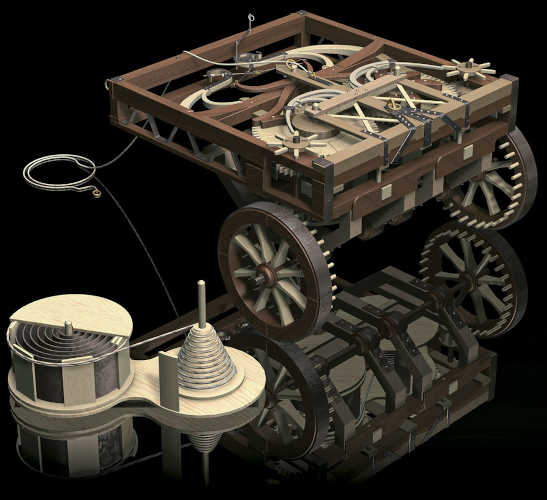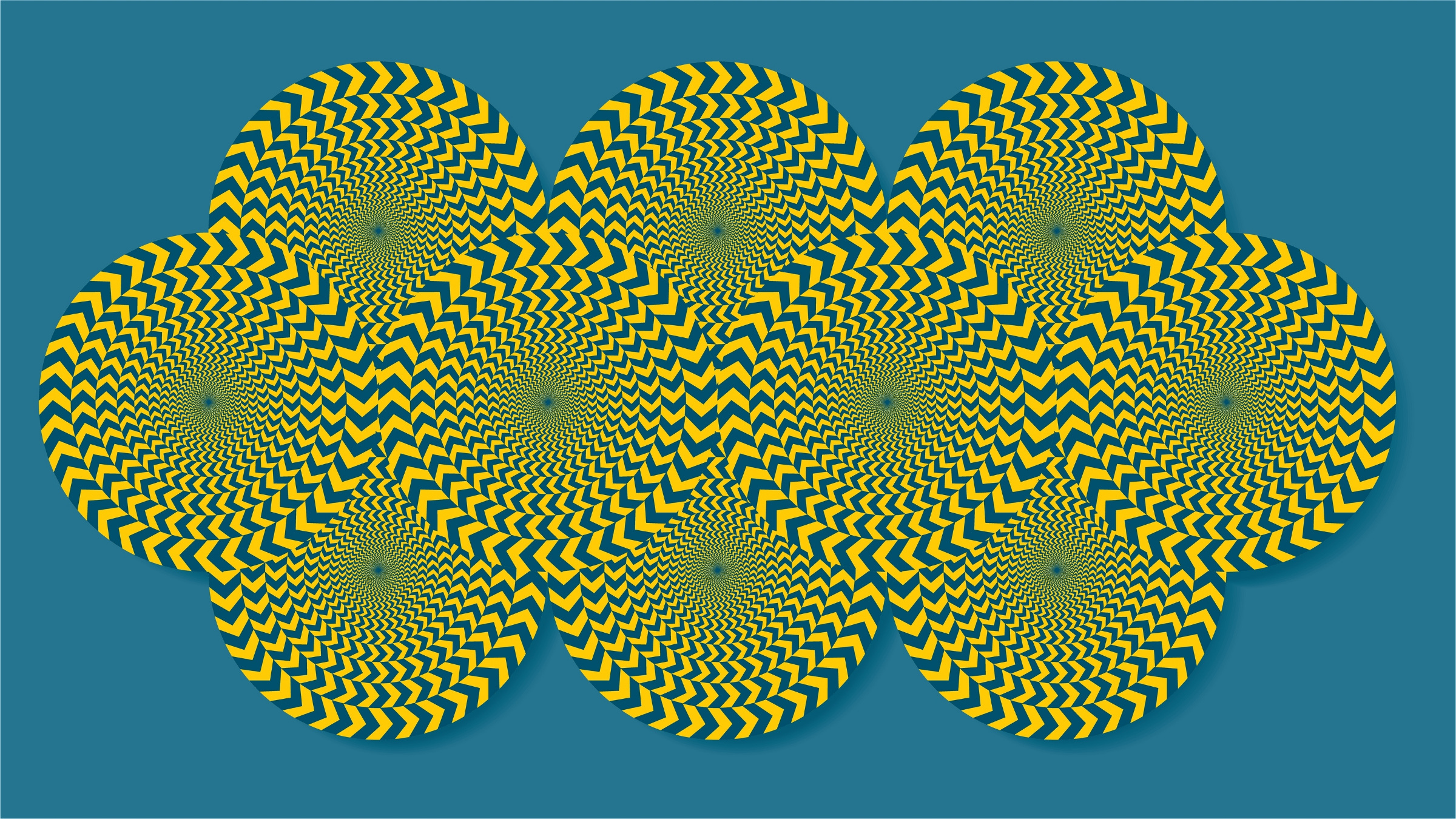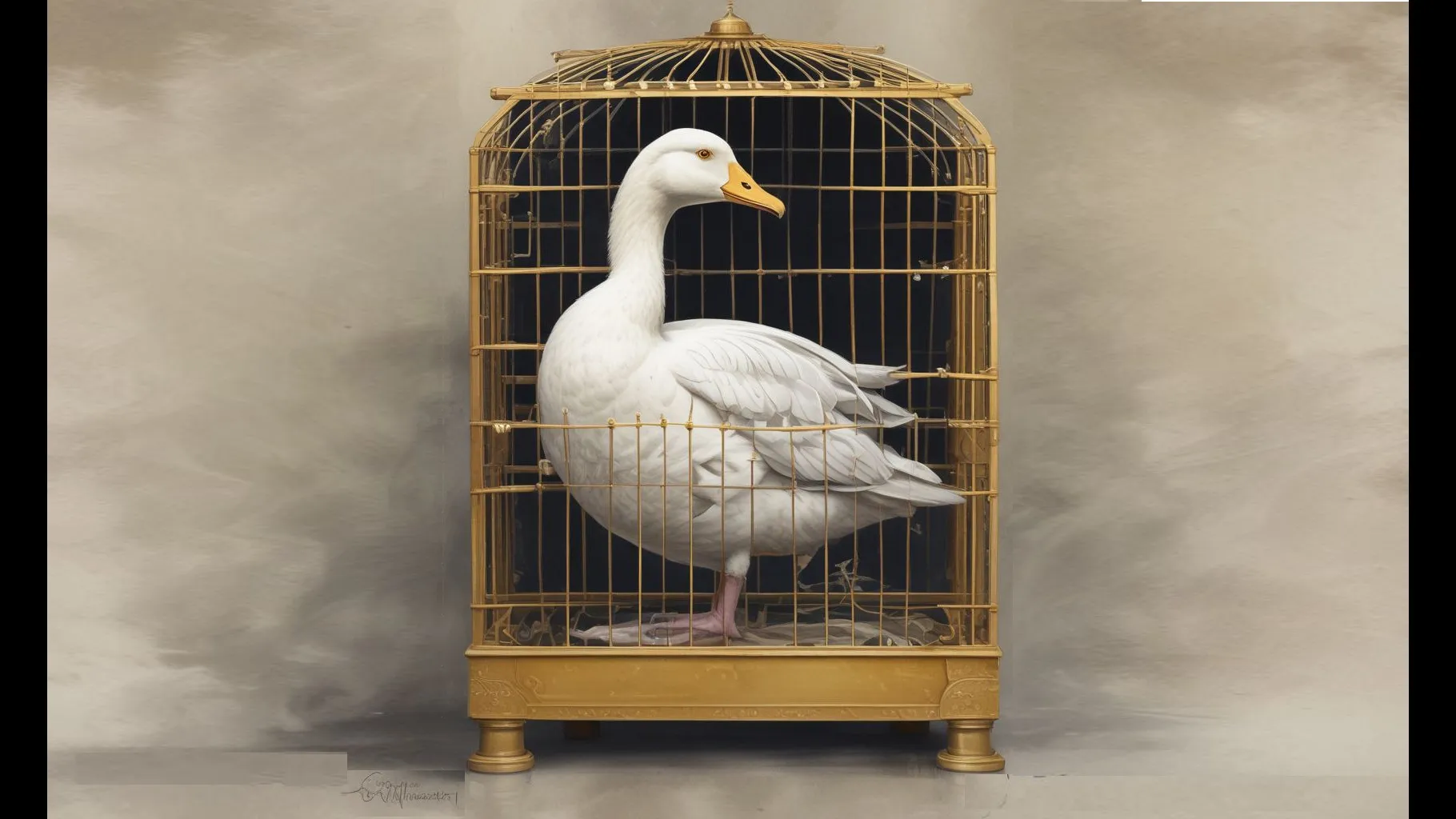
Manufacturers like Tesla have long dreamed of autonomous vehicles. However, the idea of the robot car is not new. Leonardo da Vinci, who died 500 years ago, had already designed such a car. Whether he actually produced it is unknown.
Mechanical knight and mechanical lion
The artist engineer from Tuscany drew countless automatons and also “robots,” for example a mechanical knight with cable rolls. There is evidence that he built and demonstrated his mechanical lion. The animal was able to walk a few steps. It opened its chest and distributed lilies.
Several institutions, including museums in Florence, Milan and Vinci, have tried to rebuild his constructions. There is also a model collection in New York.
Self-propelled cart
Originally, his self-propelled cart was regarded as the forerunner of our car; today, it is assumed that it was intended for theatre stages. The spring-driven programmable vehicle was able to drive straight ahead, to the left and to the right. The images below present three replicas of different ages from Italy; they usually have three wheels.
Fig. 1: Self-propelled cart.
Giorgio Canestrini built this model of the “Carro automotore” between 1952 and 1955.
Credit: © Museo Nazionale Scienza e Tecnologia “Leonardo da Vinci,” Milan; photo: Alessandro Nassiri 2009.
Figure 2: Self-propelled cart.
According to the Codice Atlantico (Biblioteca Ambrosiana, Milan, foglio 812r), Leonardo designed this device in 1478.
Credit: © Museo Galileo, Florence
Figure 3: Self-propelled car.
This model of the automobile shows how complex the vehicle is.
Credit: © Leonardo3 Museum, Milan
References
- Bruderer, Herbert: Meilensteine der Rechentechnik, De Gruyter Oldenbourg, Berlin/Boston 2018, 2 volumes
- Bruderer, Herbert: Milestones in analog and digital computing, Springer Nature Switzerland AG, Cham 2020, 2 volumes
- Campioni, Rosaria (ed.): Leonardo artista delle macchine e cartografo, Giunti gruppo editoriale, Florence 1994
- Capra, Fritjof: The science of Leonardo, Doubleday Broadway publishing group, New York 2007
- Cianchi, Marco: Le macchine di Leonardo, Becocci editore, Florence 1981
- Galluzzi, Paolo (ed.): Leonardo da Vinci, engineer and architect, The Montreal museum of fine arts, Montreal 1987
- Lisa, Massimiliano; Taddei, Mario; Zanon, Edoardo (eds.): Leonardo dreidimensional, Chr. Belser AG für Verlagsgeschäfte & Co. KG, Stuttgart 2009
- Nanni, Romano: Leonardo and the artes mechanicae, Skira editore, Milan 2013
- Rosheim, Mark Elling: Leonardo’s lost robots, Springer-Verlag, Berlin, Heidelberg 2006
- Taddei, Mario: Leonardo dreidimensional. Neue Roboter und Maschinen, Chr. Belser AG für Verlagsgeschäfte & Co. KG, Stuttgart 2008
- Taddei, Mario; Zanon, Edoardo (eds.): Leonardos Maschinen. In der Werkstatt des genialen Erfinders, Theiss Verlag, Darmstadt 2017
- Taddei, Mario; Zanon, Edoardo; Laurenza, Domenico: Leonardo dreidimensional. Mit Computergrafik auf der Spur des genialen Erfinders, Chr. Belser AG für Verlagsgeschäfte & Co. KG, Stuttgart 2006
- Taglialagamba, Sara: Leonardo & l’ingegneria, CB edizioni [Cartei & Bianchi], Poggio a Caiano (Prato) 2010
- Taglialagamba, Sara: Leonardo & engineering, CB edizioni [Cartei & Bianchi], Poggio a Caiano (Prato), 2010
- Taglialagamba, Sara: Leonardo da Vinci. Automazioni e robotica/Automations and robotics, CB edizioni [Cartei & Bianchi], Poggio a Caiano (Prato), 2010
Herbert Bruderer is a retired lecturer in didactics of computer science at ETH Zürich. More recently, he has been an historian of technology. bruderer@retired.ethz.ch, herbert.bruderer@bluewin.






Join the Discussion (0)
Become a Member or Sign In to Post a Comment